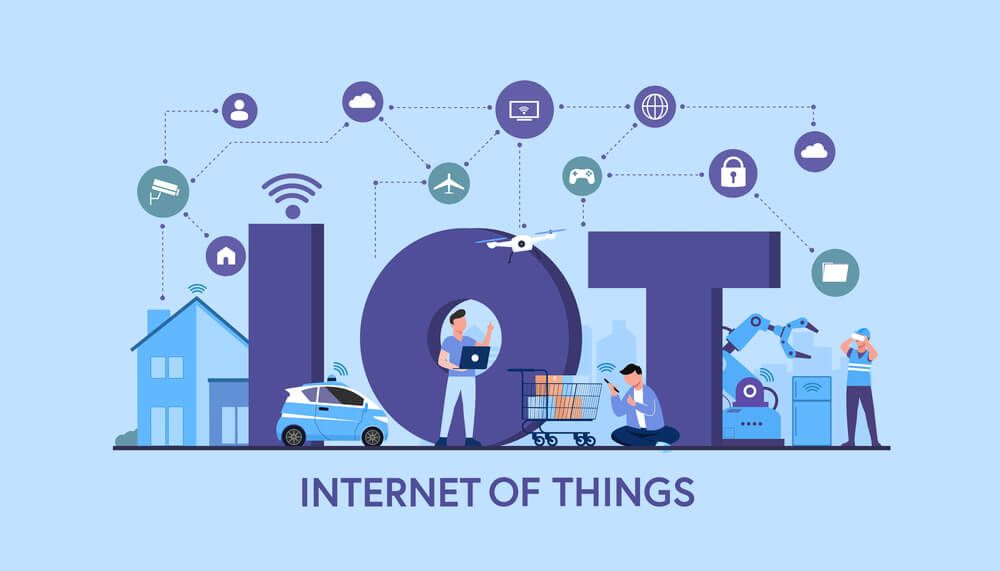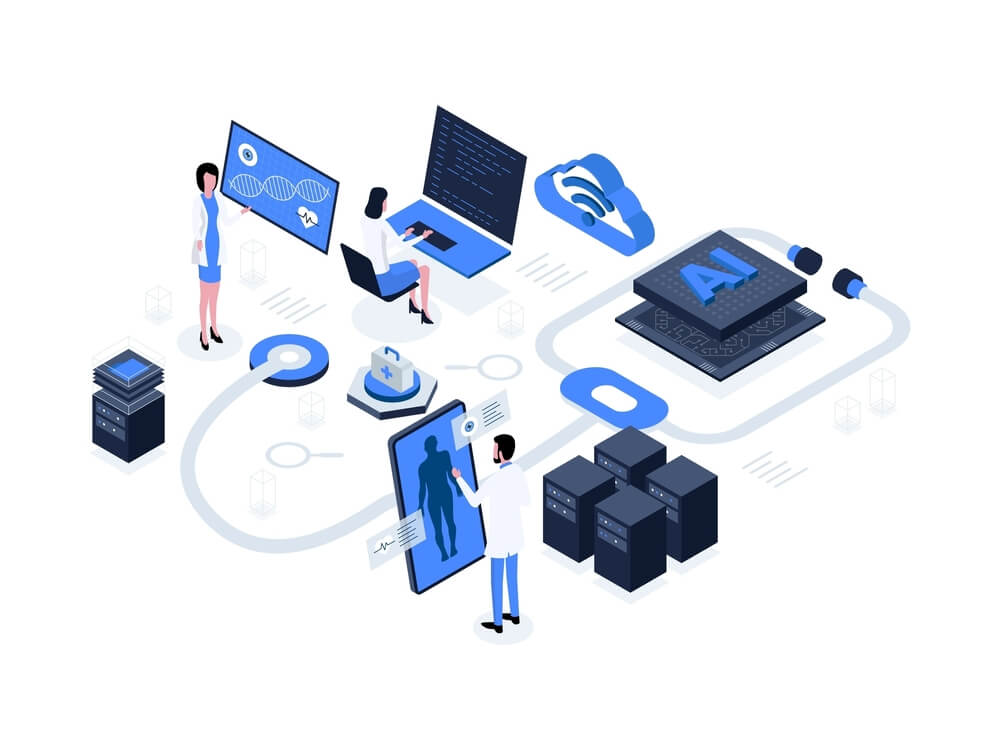VoIP Trends in 2024: What Are the Ones to Look for?

VoIP Trends in 2024: What Are the Ones to Look for?
VoIP has been steadily growing in the business scene since the late 2000s. It is now one of the main communication solutions worldwide. As time goes on, new VoIP trends emerge, making the technology even more advanced. In this article, we shed some light on the latest VoIP trends in 2024 and what to look for this year. We will talk about how AI can revolutionize VoIP, the impact of 5G on VoIP, and the results of collaboration between VoIP and WebRTC.
In addition to how VoIP integrates with IoT, what are the benefits of such an integration? Also, the growing availability of VoIP, how apps can take VoIP to the next level, and how UCaaS offers a comprehensive suite of communication. We will find out what the fate of the traditional phone systems is and how long they will remain on the market.
How Apps Can Take VoIP Mobility to the Next Level
Mobile apps have become an integral part of our daily lives. Some of us rely entirely on some of the apps to go about our day. From communication apps to navigational apps, they are inseparable from our lives in this day and age. That’s why VoIP apps are on the rise. Having a VoIP app means that you can access and use your phone system directly from your phone, wherever and whenever you want. Furthermore, this will immensely enhance the user experience, making communication easier and preventing any downtime that could happen due to the user being on the move.
The Rise of AI in VoIP

Among the VoIP trends in 2024 is the synergy between VoIP and AI. Indeed, AI has taken the world by storm the last couple of years, and VoIP is no exception. Over the past years, AI has contributed significant improvements to VoIP systems. These improvements streamlined the communication process more and aided in a faster-paced work environment.
Among these contributions are:
Speech-to-Text Conversion
Don’t want to leave a voice message? No problem. With the AI speech-to-text converter, you can leave a regular voice message and the AI will convert it to text. This is done through unique algorithms that identify audio patterns and convert them to text messages.
Conversational Agents and Virtual Assistants
Through NLP, conversational agents can be incorporated into VoIP, which means that you can have an actual conversation with an AI agent. For example, think of Siri. You can communicate with it; it can understand what you are saying and respond accordingly. This can be applied to VoIP in the form of virtual assistants that can answer calls and direct the caller to the intended party.
Adaptability to Varied Accents and Dialects
In addition, NLP agents can be trained to adapt to different accents and dialects. That way, they can understand and appropriately respond to each client, whatever their linguistic background is.
Support of Internet of Things (IoT) in VoIP

IoT has been on the rise and it is proving to be one of the most important technological advancements in modern times. Below, we will list the integration between IoT and VoIP and how it can change the VoIP scene:
Integration of VoIP with IoT Devices
VoIP can integrate with IoT devices such as speakers, thermostats, wearable gadgets, and security cameras. Cheifly, this integration will result in the ability to initiate calls or send voice commands to do certain actions on these devices; this is indeed one of the most significant VoIP trends in 2024.
Interoperability

VoIP plays a very important role in the IoT ecosystem. It enables interoperability among various IoT devices, which ensures seamless connectivity and communications among these devices regardless of their communication algorithms.
Applications in Various Settings
In smart homes, VoIP can enable smart communication to alter specific settings in the smart home. Using a voice command or VoIP call, one can turn on or off the lights, change the temperature, or check the security camera feed.
Now is the Time for Unified Communication as a Service (UCaaS):
Many businesses currently rely entirely on unified communication as a service but they don't really know it. UCaaS brings together various applications and services like calls, email, text, and video calls into a unified cloud platform that can be accessed via multiple devices, like a mobile phone, a desktop, or a laptop. This unification proved to be a very effective tool that enhances efficiency and saves time for a lot of businesses, and it is one of the most promising VoIP trends in 2024.
Scalability and Flexibility

Scalability is one of the most important features of UCaaS systems. One can add more phone numbers, users, and features as they see fit. This flexibility allows businesses to easily scale and not worry about their operations getting bigger. UCaaS can accommodate the increase in usage, number of employees, and purchases of a large number of phone numbers.
Another flexibility edge that it offers is that it is readily available across multiple devices. You can access the platform from your laptop, desktop, or even a mobile phone. Some businesses build an app specifically to offer a comfortable layout to their users and enhance the ease of use of the relatively small screen of the mobile screen.
UCaaS is more cost-efficient
Another pro of UCaaS systems is that businesses do not need to maintain on-premise communication hardware, which saves a lot on maintenance costs. Instead, the entire platform is on the cloud and on a subscription basis. That means you know exactly how much you will be paying. Some companies even offer you the great option of paying as you go, which means that you get charged only for what you use rather than a fixed subscription every month. That way, you have even more control over your communication expenses.
Enhanced Collaboration and Productivity
UCaaS platforms offer various collaboration features that enable teams to work efficiently regardless of where they’re working from. Among these tools are real-time messaging, screen sharing, video conference calls, and file sharing. These platforms can also integrate with other platforms, such as email platforms, CRMs, and project planning platforms, which makes the work process even more streamlined.
Reliability and Security

UCaaS solutions are typically hosted in secure data centers that incorporate encryption, authentication, and access controls. This means that the data shared and exchanged through the platform is secured against cyberattacks.
The Synergy between 5G and VoIP

5G is a significant milestone in the world of communication. It promises speed, reliability, and scalability. The synergy between 5G and VoIP is one VoIP trends in 2024 to look for. Here’s how their impact will be in 2024:
Speed and Low Latency
5G networks are characterized by the utmost speed and reduced latency. Data rates could reach several gigabytes per second. This means that the transfer of information is exchanged in a fraction of the time it used to take. Combining this technology with VoIP will result in the bare minimum to complete elimination of latency in video and voice calls. Enabling users to have crisp, clear calls with a faster connection and a better quality of voice.
Reliability and Network Capacity
5G networks are designed to handle maximum capacity. This means that it can handle densely populated areas where the demand for data is high. This ensures realiability and an increased network capacity to ensure that all of the users receive the best network coverage regardless of where they are or how populated the area is. In turn, this reflects on VoIP systems, as their quality and efficiency will consequently increase. That means fewer calls dropping, clearer voice and video quality, and uninterrupted calls, which leads to an overall increase in performance and output.
Enhanced Quality of Service (QoS)
5G networks prioritize quality of service parameters, which means that VoIP calls have priority for low latency and high throughput. This preferential treatment means that VoIP calls will always have the headstart and favoursim to receive service even in times of network congestion. This results in VoIP being able to offer HD voice and video calls to their users using the 5G network. This will increase the quality of the calls and the overall user experience.
Scalability and Future-Proofing
5G is built to scale up by design. Which means it can accommodate increasing demands in data. This scalability ensures the network's reliability, serving as the cornerstone for enhancing your VoIP system. Future-proofing any plans to scale the business in terms of users or data used. This will also allow systems relying on 5G networks to seamlessly use the emerging technologies of VR, AR, and IoT, which require ultra-fast connectivity, to enhance their user experience.
VoIP is Becoming the New Norm

VoIP is proving to be one of the most relied-upon solutions for business communications. This is due to the fact that it is cheaper, feature-rich, and has the seamless ability to scale up. We’ve touched upon how it is more cost-effective and has the ability to scale. Let’s talk a bit about the features of VoIP and the successful use-cases of modern-day businesses using the technology.
Auto Attendant
This feature allows you to assign an automated interactive voice responder to calls coming in. This implies that the caller's input can direct them to a specific party. You most definitely encountered this feature when you called a bank or a large chain of stores. This feature enables the redirection of calls to the appropriate party, saving time and money.
Call Conferencing
Call conferencing has peaked during the COVID pandemic. A lot of new companies were on the rise using technology like Zoom. This feature allows multiple users to communicate through remote chat rooms or meetings. Call conferencing emerged as the savior back in 2020, enabling businesses to maintain their day-to-day operations with minimal interruptions. It was also the technological spark that illuminated the concept of remote working in a professional capacity.
Voicemail-to-Email Transcription
Ever left a voicemail and felt that you wanted to be a bit more professional and send it in an email instead? Well, then, this feature is for you. Voice-to-email transcription allows you to leave a voicemail, which is automatically transcribed into a written email and sent to the intended party. This is one of the latest VoIP trends.
Successful VoIP Implementations Across Industries
Healthcare: Healthcare is one of the industries that relies on the technology of VoIP through telemedicine consultancy, patient appointment scheduling, and the communication of the medical staff. Hospitals and clinics also use VoIP for remote patient monitoring and virtual visits.
Education: Education is probably the best example of a successful VoIP implementation. During the pandemic, the only way teachers and students could communicate was through online meetings. This enabled the learning process to go uninterrupted even in the hardest of times. This method proved to be so successful that it remained in effect even after the pandemic ended.

Finance: Financial institutions rely on VoIP for day-to-day client communication and internal collaborations. These also utilize an important feature of VoIP, which is the call recording feature. This feature enables the company to monitor calls and ensure that they adhere to the company's compliance and quality standards.
VoIP Collaboration with WebRTC:
WebRTC stands for web real-time communications. The collaboration between WebRTC and VoIP enables users to make calls through a web-based application. Here’s a more detailed explanation of the technology and how it fits into the latest VoIP trends of 2024.
Browser-Based Communication

WebRTC enables users to access the VoIP platform directly from the web, eliminating the need to download additional software. This browser-based solution is often called the VoIP dashboard.
Through the dashboard, you can make and receive calls and purchase new phone numbers. Also, create new users to use the system and set up your auto-attendant. Additionally, you can set up your weekly business schedule, mark your vacation days and decide what should happen if a client calls. Moreover, you can monitor and listen to call recordings that were made.
In addition, you can monitor your balance and see what your expenditure for the month is and where it went. This browser-based dashboard gives you the power to control your system and the ability to perform multiple actions all from a single web page.
Real-Time Communication
WebRTC enables real-time communications via peer-to-peer connections and multimedia streaming protocols from web browsers. This implies that data and voice transmit with low latency and high reliability, facilitating a smoother connection and a clearer voice. You can easily make calls from the web browser. The interface allows you to enter the phone number or copy and paste a number and make the call with a single click.
Farewell to Traditional Phone Systems

After all that we mentioned, it is crystal clear that VoIP is the future. And, after all, maybe that’s why there are a lot of VoIP trends in 2024 to look forward to. All the technological advancements that are currently being released and will be released seamlessly integrate with VoIP. Without a doubt, the two technologies complement each other. Realistically speaking, with all these advancements and features, traditional phones just can’t keep up with VoIP. That’s why the public switched telephone network is shutting off in 2025. This means that the number-one communication solution is going to be VoIP. And if you ask me, this is the natural technological transition.
Wrapping up!
In conclusion, VoIP trends are shaping up to be very promising. Without doubt, the merging of cutting-edge technologies and the adoption of VoIP across multiple industries. In addition to the switch off of the traditional phone network, all point towards VoIP being the future of communication. In other words, the advancements promise a very bright future for individuals and businesses adopting VoIP technologies. Without doubt, the powerful synergies between VoIP and upcoming technologies are going to revolutionize how we approach communication. Also, it is definitely going to elevate the user experience to new limits.
